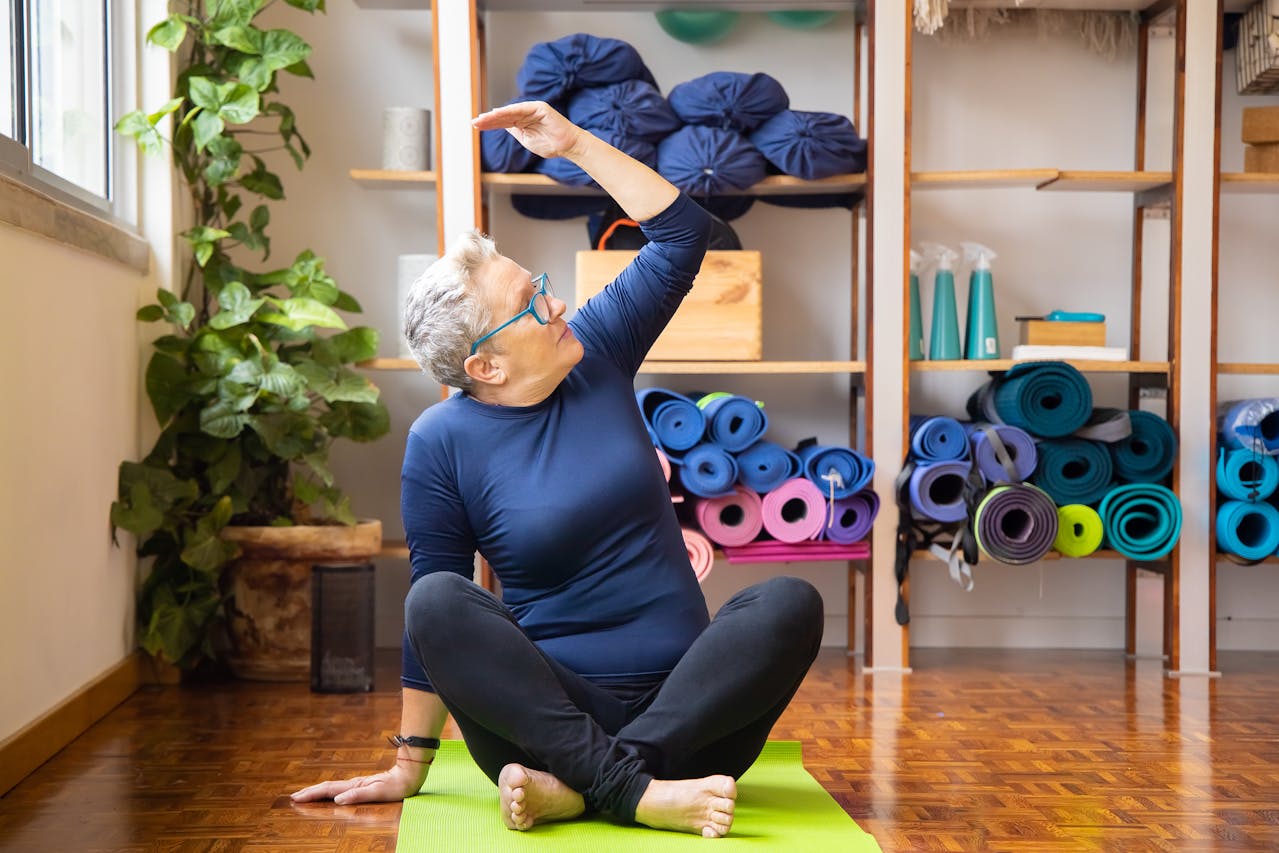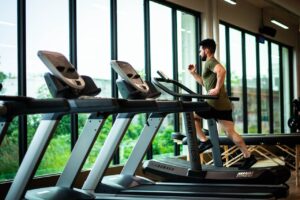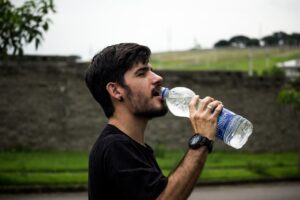Aging is an inevitable part of life, but how we age largely depends on the choices we make daily—especially those related to movement and activity. Staying active as we grow older is one of the most powerful ways to maintain independence, health, and happiness. Unfortunately, many people begin to slow down with age, believing it’s natural to become less mobile or energetic. While some physical changes are unavoidable, the truth is that regular activity can dramatically improve how we feel, move, and live well into our golden years.
Whether you are in your 40s, 50s, 60s, or beyond, maintaining an active lifestyle doesn’t have to mean running marathons or lifting heavy weights. It’s about keeping your body moving, maintaining your muscle strength, protecting your heart, and preserving your flexibility and balance. In this comprehensive guide, we’ll explore why staying active is so important as you age, the best types of activities to engage in, and practical tips to help you make physical activity a lifelong habit.
1. THE IMPORTANCE OF STAYING ACTIVE AS YOU AGE
Remaining physically active is one of the most vital things you can do for your health as you age. It enhances your physical, mental, and emotional wellbeing, and it can significantly extend your healthy years. Regular movement helps prevent chronic diseases, improves mood, and preserves independence, allowing older adults to continue enjoying the activities and relationships that matter most.
When we stop moving, our muscles weaken, our joints stiffen, and our balance deteriorates. These changes increase the risk of falls, injuries, and chronic health issues. On the other hand, when we remain active, we maintain muscle mass, flexibility, and endurance—all of which are essential for performing daily activities with ease. Physical activity also helps the brain by stimulating memory, concentration, and creativity, reducing the risk of cognitive decline.
Moreover, staying active can improve social connection. Many physical activities—like walking groups, dance classes, or yoga sessions—create opportunities to meet others, reducing loneliness and depression. In essence, exercise nourishes not just the body but also the mind and spirit.
2. HOW AGING AFFECTS THE BODY
Understanding how aging impacts the body helps us see why regular activity is so important. As we age, several physiological changes occur that affect our overall function. Muscle mass gradually declines, a process known as sarcopenia. This can begin as early as age 30 and accelerates after age 50 if we don’t engage in strength training. Reduced muscle mass makes it harder to perform everyday tasks, like climbing stairs or lifting groceries.
Bones also lose density with age, increasing the risk of fractures and osteoporosis. Joints may become stiffer due to decreased cartilage and reduced production of lubricating fluids. The cardiovascular system changes too—heart rate slows, and arteries may stiffen, reducing circulation efficiency. Metabolism tends to slow down, making it easier to gain weight and harder to maintain energy levels.
However, the good news is that physical activity can counteract nearly all these effects. Exercise strengthens muscles, maintains bone density, supports cardiovascular health, improves metabolism, and keeps joints flexible. Even modest levels of regular movement can slow or reverse many age related declines.
3. THE PHYSICAL AND MENTAL BENEFITS OF STAYING ACTIVE
The benefits of regular activity extend far beyond physical fitness. Here are some key ways staying active supports aging gracefully:
a) Improved strength and mobility:
Consistent physical activity keeps muscles strong, joints flexible, and bones resilient. It enhances balance and coordination, reducing the risk of falls—a leading cause of injury in older adults.
b) Heart and lung health:
Aerobic activities like walking, swimming, and cycling strengthen the heart and lungs, improving circulation and oxygen delivery throughout the body.
c) Better weight management:
Exercise helps regulate metabolism, burns calories, and maintains lean muscle mass, making it easier to manage weight and prevent obesity related conditions like diabetes and heart disease.
d) Enhanced cognitive function:
Physical activity increases blood flow to the brain, stimulating the growth of new neurons and enhancing memory, focus, and decision making. Studies show that active older adults are less likely to develop dementia or Alzheimer’s disease.
e) Improved mood and emotional wellbeing:
Exercise triggers the release of endorphins—the body’s natural “feelgood” hormones. It can help reduce symptoms of anxiety, depression, and stress while boosting confidence and self esteem.
f) Better sleep and energy levels:
Regular movement promotes deeper, more restful sleep and helps regulate your internal body clock. It also improves overall energy levels by enhancing blood circulation and oxygen delivery to tissues.
g) Longevity and quality of life:
Perhaps most importantly, staying active can add years to your life—and life to your years. Physically active people live longer and experience fewer disabilities in old age.
4. OVERCOMING COMMON BARRIERS TO STAYING ACTIVE
While the benefits of exercise are clear, many people struggle to stay active as they age due to common obstacles. Recognizing and addressing these barriers is essential to developing a sustainable fitness routine.
Lack of time:
Busy schedules, even in retirement, can make it hard to prioritize exercise. The key is to integrate movement into your daily routine—like walking instead of driving for short trips, doing chores actively, or taking short exercise breaks.
Fear of injury or pain:
Concerns about hurting yourself can be discouraging, especially if you have arthritis or other health conditions. However, gentle, low impact exercises such as swimming, yoga, or cycling are safe and effective. Always consult your doctor before starting a new fitness program and consider working with a certified fitness instructor who understands older adults’ needs.
Lack of motivation:
Staying motivated can be tough. Setting realistic goals, finding activities you enjoy, and exercising with friends can make a big difference. Tracking your progress and celebrating milestones also helps maintain enthusiasm.
Health conditions:
Chronic illnesses like diabetes, heart disease, or joint pain can limit activity, but movement remains beneficial and often therapeutic. Exercise programs can be modified to accommodate health challenges, and physical therapists can design safe routines that fit your abilities.
Weather or accessibility issues:
Bad weather or lack of access to a gym can make outdoor exercise difficult. In such cases, indoor workouts—like dancing, yoga, or resistance band exercises—can keep you moving year round.
5. BEST TYPES OF EXERCISE FOR OLDER ADULTS
To stay active as you age, it’s important to engage in a balanced fitness program that includes different types of exercise. Each type offers unique benefits, and combining them ensures well rounded physical health.
a) Aerobic (Cardio) exercise
Aerobic activities strengthen the heart and lungs, improving endurance and overall cardiovascular health. Examples include brisk walking, swimming, dancing, cycling, or even gardening. The goal is to elevate your heart rate and breathing moderately for at least 150 minutes per week. You can break this into 30minute sessions five days a week or shorter 10minute bursts spread throughout the day.
Walking is particularly beneficial because it’s low impact, accessible, and easy to fit into any lifestyle. Consider walking with friends or joining a local walking group for social motivation.
b) Strength training
Muscle loss is one of the main challenges of aging, but resistance training can reverse this process. Using weights, resistance bands, or even your body weight helps maintain muscle mass, bone density, and metabolic rate. Strength training improves posture, balance, and the ability to perform everyday tasks independently.
Aim to train all major muscle groups at least twice per week. Exercises like squats, wall pushups, leg raises, and seated rows are effective and can be modified for any fitness level.
c) Flexibility exercises
Flexibility decreases with age, making joints stiff and limiting movement. Stretching helps maintain joint health and prevent injury. Yoga, Pilates, and tai chi are excellent for improving flexibility, balance, and relaxation. Gentle daily stretches for the neck, shoulders, back, and legs can also keep your body supple and reduce pain.
d) Balance and coordination work
Falls are a major concern for older adults, but balance exercises can significantly lower this risk. Activities like standing on one foot, heel to toe walking, or practicing tai chi enhance stability and coordination. These exercises strengthen your core and improve proprioception (awareness of body position), helping you move more confidently.
e) Mindbody exercises
Mindbody activities such as yoga, tai chi, and qigong promote both physical and mental wellbeing. They combine controlled movement, breathing, and meditation to improve flexibility, strength, and mindfulness. These exercises also reduce stress and anxiety, making them ideal for holistic health.
6. TIPS FOR STARTING AND MAINTAINING AN ACTIVE LIFESTYLE
If you haven’t exercised for a while, getting started may feel intimidating. The key is to begin slowly, listen to your body, and build consistency over time. Here are practical tips for starting—and sticking with—an active routine:
Start small and build gradually:
Begin with light activities like short walks or gentle stretches. As your fitness improves, gradually increase duration and intensity. Slow, steady progress reduces the risk of injury and boosts confidence.
Set realistic goals: Set specific, measurable, and achievable goals—such as walking 20 minutes a day or attending a weekly yoga class. Tracking your progress provides motivation and a sense of accomplishment.
Find activities you enjoy:
You’re more likely to stick with exercise if it’s fun. Try different options—dancing, swimming, gardening, or playing with grandchildren—to discover what feels enjoyable and sustainable.
Make it a habit:
Schedule your workouts like appointments. Consistency is more important than intensity. Even 10minute movement breaks throughout the day can add up over time.
Exercise with others:
Social connections make staying active more enjoyable and accountable. Join community fitness classes, walking groups, or online exercise communities for support.
Listen to your body:
Rest when needed, and don’t ignore pain or discomfort. Some muscle soreness is normal, but sharp pain is a signal to stop. Always warm up before exercising and cool down afterward to prevent injuries.
Stay hydrated and eat well:
Nutrition supports your activity level. A balanced diet rich in fruits, vegetables, lean protein, and whole grains fuels your body and aids recovery.
Consult your doctor:
Before starting a new exercise plan, especially if you have chronic health issues, consult a healthcare professional. They can recommend safe exercises tailored to your condition.
7. STAYING ACTIVE THROUGH THE DECADES
Your activity needs and capabilities evolve over time. Here’s how to adapt your fitness routine through different life stages:
In your 40s:
This is often when metabolism starts slowing down. Focus on a mix of cardio, strength, and flexibility exercises. Prioritize core strength and posture to support your back and joints.
In your 50s:
Hormonal changes, particularly for women, can affect bone density and muscle mass. Weightbearing exercises, resistance training, and balance work become even more essential. Keep stress in check with yoga or meditation.
In your 60s:
Joint stiffness may start to appear, so include low impact exercises like swimming or cycling. Focus on maintaining balance, flexibility, and cardiovascular health. Social exercise groups can provide both fitness and companionship.
In your 70s and beyond:
Mobility and independence are key goals. Gentle strength training, walking, tai chi, and stretching exercises keep you active and confident. Even if you have limited mobility, chair exercises and light resistance work can make a big difference.
8. THE ROLE OF NUTRITION AND REST IN AN ACTIVE LIFESTYLE
Exercise is only part of the equation—nutrition and rest are equally important. As you age, your nutritional needs change. The body requires more protein to preserve muscle mass, calcium and vitamin D for bone health, and antioxidants to fight inflammation.
Eating a balanced diet with lean proteins (like fish, chicken, beans, and nuts), whole grains, colorful vegetables, and fruits provides essential nutrients. Avoid excessive sugar and processed foods that can contribute to weight gain and fatigue.
Hydration is often overlooked but crucial. Older adults are more prone to dehydration, which affects energy, concentration, and muscle function. Make sure to drink water regularly throughout the day, even if you don’t feel thirsty.
Rest and recovery are equally vital. Muscles repair and grow stronger during rest periods, so ensure you get adequate sleep and relaxation. Quality sleep also supports mental health, hormone balance, and immune function—all necessary for staying active and vibrant.
9. STAYING MOTIVATED FOR THE LONG TERM
Long term consistency is the greatest challenge for most people. Motivation can fluctuate, but discipline and enjoyment can sustain an active lifestyle. Here are ways to stay motivated:
- Track your progress: Keep a fitness journal or use a fitness app to record your achievements. Seeing your improvements builds momentum.
- Celebrate small wins: Reward yourself when you hit milestones—whether it’s a new walking distance or mastering a yoga pose.
- Vary your routine: Avoid boredom by trying new activities or alternating workouts. Variety keeps exercise exciting and challenges your body in new ways.
- Use music or podcasts: Listening to upbeat music or educational podcasts can make workouts more enjoyable.
- Stay accountable: Exercise with friends or hire a trainer who keeps you on track and motivated.
- Focus on how you feel: Notice how exercise boosts your energy, mood, and confidence. This positive reinforcement is powerful motivation to continue.
10. ADAPTING TO PHYSICAL LIMITATIONS AND HEALTH CONDITIONS
As we age, certain conditions such as arthritis, osteoporosis, heart disease, or limited mobility may make exercise more challenging—but not impossible. The key is adapting your routine to suit your abilities.
For joint pain or arthritis, low impact activities like swimming, water aerobics, or cycling minimize stress on joints while improving flexibility. For osteoporosis, resistance training strengthens bones, while balance exercises prevent falls. People with heart conditions should focus on moderate intensity cardio and consult doctors for personalized guidance.
Even if you have limited mobility, you can perform seated exercises that strengthen muscles and improve circulation. Chair yoga, resistance band workouts, and light arm or leg movements can still yield major health benefits.
11. HOW TO MAKE EVERYDAY LIFE MORE ACTIVE
You don’t need a gym membership to stay active. Daily habits can keep you moving naturally. Take the stairs instead of the elevator, walk or cycle instead of driving short distances, do household chores briskly, and take short walks after meals. Gardening, dancing, or playing with pets are also excellent forms of exercise that don’t feel like workouts.
If you spend long periods sitting, set reminders to stand up and stretch every hour. Simple activities like calf raises, shoulder rolls, or gentle squats during TV commercials help counteract the effects of sedentary time. The goal is to incorporate movement into your lifestyle naturally.
12. THE SOCIAL ASPECT OF STAYING ACTIVE
Physical activity doesn’t just improve health—it builds community. Joining group classes, walking clubs, or local sports teams can make exercise enjoyable and socially rewarding. These interactions reduce loneliness and increase motivation. For retirees, social activities combined with exercise provide a strong sense of purpose and belonging.
Even virtual fitness communities or online classes can help you stay connected. Sharing progress, challenges, and successes with others keeps your commitment strong and your spirits high.
13. EMBRACING A POSITIVE MINDSET ABOUT AGING
Staying active isn’t just about maintaining physical health—it’s about embracing aging with a positive, proactive mindset. Many people associate aging with decline, but active individuals often report higher happiness and life satisfaction. When you view movement as a celebration of what your body can do rather than a punishment for aging, you build a sustainable and fulfilling relationship with exercise.
Aging gracefully means adapting, not giving up. Every step, stretch, and breath counts toward a longer, healthier, and more joyful life.
Conclusion: Movement is the secret to lifelong vitality
Staying active as you age is not about chasing youth—it’s about nurturing vitality, independence, and happiness. No matter your age or fitness level, it’s never too late to start moving. Regular activity strengthens your body, sharpens your mind, and uplifts your spirit. It allows you to enjoy life to the fullest, stay connected with others, and continue doing what you love.
Start where you are, use what you have, and do what you can. Every movement—no matter how small—counts toward a healthier, more vibrant life. Aging is not a signal to slow down; it’s an opportunity to move smarter, stay stronger, and live better.
So, take that walk, stretch those arms, join that class, or dance to your favorite song. Your body and mind will thank you—today, tomorrow, and for years to come.



